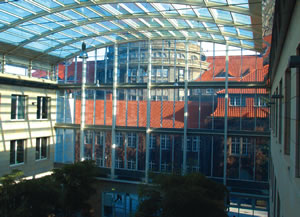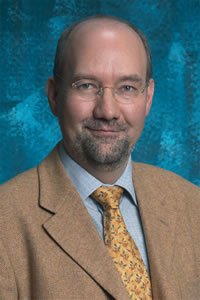

GD — Society for Dermopharmacy
 |
Issue 2 (2002) |
Dermopharmacy
News
6th
Annual Meeting of the GD between 20 and 22 March 2002 in Hamburg
Wide-ranging
Information and Interdisciplinary Knowledge Transfer
The GD Gesellschaft für Dermopharmazie e.V. sets a special focus
on measures for prevention and therapy of dermatological diseases. An
important forum for interdisciplinary exchange of knowledge and ideas
among dermatologists, pharmacists, scientists, industry representatives
and other experts is the Annual Meeting of the GD which took place at
Hamburg University between 20 and 22 March in 2002. The scientific conference
management was with professor Dr. med. Martina Kerscher, Hamburg, and
professor Dr. Rolf Daniels, Brunswick, a dermatologist and a pharmaceutical
technologist. Approximately 250 participants from Germany, Austria and
Switzerland experienced an extensive program covering all aspects of Dermopharmacy.
The GD president, Dr. Joachim Kresken, Viersen, was proud to inform that solely members and friends of the society as well as its own economic enterprise, the ID-Institute for Dermopharmacy GmbH, were able to organize the entire conference. The meeting has been supported by a large number of sponsors to whom the president expressed his thanks for their generous assistance in his welcoming speech. Kresken emphasized that the program of the GD's Annual Meeting has never before been as comprehensive as that year. Besides the scientific main program with lectures from the areas Dermopharmaceutic Chemistry and Quality Assurance, Pharmaceutical Technology and Biopharmacy, Dermocosmetics as well as Dermatopharmacology and Dermatotherapy, workshops took place dealing with the subjects "Practice-oriented Prescription in 3rd Millenium" and "Dermocosmetic Sun Protection", organized by the GD departments Extemporaneous Preparations and Dermocosmetics. An additional part of the program was a satellite symposium with the title "Cosmetics - Effective and Safe", which had been organized by the Industrieverband Körperpflege- und Waschmittel e.V. (IKW) [Industrial Association Personal Hygiene and Detergents].
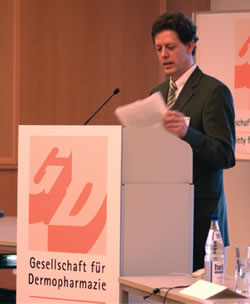 The GD-president, Dr. Joachim Kresken, in his opening address at 6th Annual Meeting of the GD. |
The meeting program comprised for the first time also a scientific poster exhibition. Moreover, the meeting participants had the opportunity to visit the contract research institute proDerm in Schenefeld near Hamburg. A further program topic was the 3rd symposium "Health Economy in Dermatology". This event organized by the research group Pharmaco-economy and Outcomes Research of the University Dermatological Clinic, Freiburg, has been realized for the first time in cooperation with the GD (please refer to the detailed article about this subject). The 6th Annual Meeting of the GD was completed by an evening event in the traditional Hamburg restaurant "Historischer Gasthof Anno 1750" on 21 March. In the frame of this event the GD honoured its vice-president, professor Dr. med. Hans Christian Korting, Munich, who celebrated his fifties birthday on this day.
|
|
Tissue Engineering in Dermatology
The scientific main program of the 6th Annual Meeting of the GD started with a basic lecture of professor Dr. med. Erwin Schöpf, Freiburg, the former president of the Deutsche Dermatologische Gesellschaft (German Dermatological Society). Schöpf discussed the question whether biotechnology and the so-called Tissue Engineering represent a viable way for dermatology into the future. In general, Tissue Engineering comprises the development of biological replacements for the recovery respectively maintaining or improvement of a tissue function. By cultivation and transplantation of autologous cells, immunological defence reactions and infect transfer are avoided as are to be feared with allogenic tissue replacements. Schöpf emphasized that when making use of this technology, adherence to the GMP-guidelines (Good Manufacturing Practice) is of essential significance.
An application of the Tissue Engineering in dermatology is the transplantation of autologous keratinocytes for the treatment of chronical wounds. It is true that this concerns a costly technology but due to the fact that it normally does not require an in-patient treatment, it is often more cost-effective than traditional treatment methods in particular in case of the treatment of large wounds persisting for months, Schöpf explained. He sees an additional application field of Tissue Engineering in dermatology in the therapy of vitiligo, which can be treated by a transplantation of autologous melanocytes.
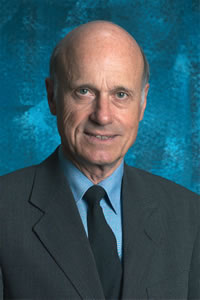 Professor Dr. med. Erwin Schöpf informed about Tissue Engineering. |
Further, there are interesting possibilities to compensate genetically determined defects by transfection of healthy genes in autologous cells of diseased persons. Thus, applications of Tissue Engineering for example at Epidermolysis bullosa hereditaria, Xeroderma pigmentosum and diverse Ichthyosis forms are conceivable.
In the Center of Interest:
Peptides as Preservative
The lecture series "Dermopharmaceutic Chemistry and Quality Assurance" dealt with novel preservatives as well as quality problems of dermopharmaceutic primary materials. As is generally known, preservatives are added to dermal preparations as protection from microbial contamination. Due to the fact, however, that none of the presently available preservatives ideally meets all requirements, there is an on-going search for alternatives in this field. Professor Dr. Claudia Valenta of the Institut für Pharmazeutische Technologie und Biopharmazie (Institute for Pharmaceutical Technology and Biopharmacy) of Wien University, presented possibilities of developing novel preservatives on the basis of peptides. Such substances can meanwhile be relatively cost-effectively synthesized by means of biotechnological methods, the lecturer explained.
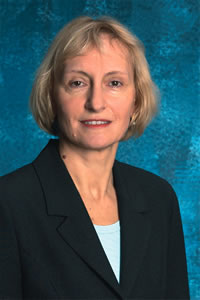 Professor Dr. Claudia Valenta presented preservatives on peptide basis. |
For practical use, e.g. derivatives of the peptide nissine and lysozyme can be taken into consideration. However, as nissine and lysozyme show nearly only effectiveness against gram-positive bacteria, possibilities have been investigated to enlarge the effective spectrum of these substances to gram-negative germs. In the case of nissine this search has been successful by chelate formation with a chitosan EDTA-gel. Lysozyme has been conjugated in covalent bonding to cinnamaldehyde and caffeic acid - linkages which are also effective towards gram-negative pathogens. Of the thus prepared conjugates, the lysozyme-caffeic acid conjugates showed a marked antimicrobial activity compared with the gram-negative model germ Escherichia coli when applying in different hydro gels. Since however the effectiveness of lysozyme against gram-positive bacteria is attenuated by coupling to caffeic acid, the lecturer recommends for practical use the application of a 1:1-mixture of conjugate and free lysozyme.
Moreover, lysozyme-caffeic acid conjugates are interesting as new preservatives because they practically do not penetrate in skin due to their high molecular weight. The antimicrobial effect, however, has to be checked in each vehicle, as the lecturer explains, because an effect reduction of the conjugate by adsorptive linkage to vehicle components cannot be excluded.
Dr. Beate Hirrlinger, Stuttgart, dealt with problems of quality assurance of primary materials for the production of dermatics. She emphasized the necessity of GMP-conforming test certificates by taking the active substance erythromycin as example, seven charges of which were recalled in 1998 due to prohibited solvent residues. Since soilings as the solvent residues in question are difficult to cover by pharmaceutical producers even with the most conscientious analytical entry control, the test certificates delivered with the product have to be based on a closed information chain. It has to cover data from the synthesis via all transport and repack proceedings to the processing in the pharmaceutical industry respectively pharmacy. Without establishing of such an information chain, the quality of the primary material and thus the safety of the pharmaceutic cannot be ensured.
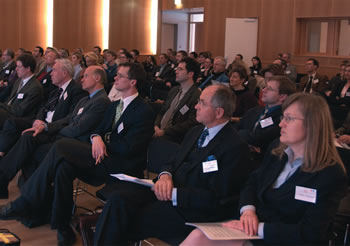 With altogether 250 participants from Germany, Austria and Switzerland the lecture halls were well attended on each day of the Annual Meeting. |
Innovative Vehicle
Systems for Dermal Applications
In the frame of the lecture series "Pharmaceutical Technology and Biopharmacy", professor Dr. Rainer Helmut Müller, Berlin, introduced a new generation of active substance vehicles for dermal applications. This concerns nano-structured lipid carriers (NLC), for which Müller identifies numerous application possibilities both in topical pharmaceutics and cosmetical products.
|
|
To begin with, liposomes were introduced as active substance vehicles in topical formulations in the middle of the eighties, following in the beginning of the nineties solid lipid-nano particles were developed (Solid Lipid Nanoparticles, SLN). The latter are subject to investigation worldwide at present particularly for pharmaceutical applications. In this context besides numerous favorable properties, the limited loading capacity and a too large water proportion in the particle dispersion have been identified as drawbacks of these active substance carriers.
With the new NLC, locally very much differing lipids form a less organized matrix, which can be loaded with higher concentrations of lipophile active substances than it is the case with SLN. Only with the transition of the matrix in a more organized modification, the incorporated active substance is exhausted. By means of a special production process, the NLC can be processed to particle dispersions with the consistence of a cream or paste. On skin they form a film, which, according to Müller's information, reduces the trans-epidermal water loss, and increases the skin humidity. Moreover, the penetration of active substances can be enhanced by film formation. The solid lipid matrix of the NLC protects unstable substances from premature degradation and extends thus the stability of the preparations concerned.
 Again 6th Annual Meeting of the GD met with keen interest from the media. Besides expert circles also the general public was informed about the meeting. The reporting in the press, broadcasting and television reached more than eight million consumers. |
Answers to
Dermatopharmaco-kinetic Questions
In two further lectures from the field of pharmaceutical technology, results of dermatopharmaco-kinetic investigations have been presented. Professor Dr. Christel Müller-Goymann of Brunswick University reported about investigations concerning liberation and permeation of hydrocortisone from different pharmacopoeia bases (hydrophilic ointment, aqueous hydrophilic ointment, crude wool grease alcohol ointment, aqueous crude wool grease alcohol ointment). When incorporating one percent hydrocortisone into these bases, in all cases suspension preparations resulted, in which the medicinal agent was released in different periods of time. However, the varying release time did not influence the permeation speed of the active substance by excised human stratum corneum. It was the same in all cases and could only be changed by additional incorporation of penetration enhancers.
Dr. Ulrich Schäfer, Saarbrücken, informed about the results of penetration investigations based on the model medicinal agent flufenamic acid, by means of which a contribution for clarifying of the general question is to be made, to what extent results of in-vitro penetration models correlate with those of in-vivo experiments. In the course of his investigations with flufenamic acid, Schäfer found a linear correlation with in-vivo data for the results determined in various in-vitro models. This is why he has an optimistic attitude that the more cost-effective and less time-consuming in-vitro procedures are brought increasingly in action for the development of new drugs for dermal or transdermal applications in the future.
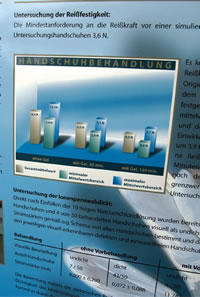 For the first time a scientific poster exhibition took place on the occasion of an Annual Meeting of the GD. |
Approval of Dermatics
requires a Large Number of Data
Professor Dr. med. Roland Niedner, Potsdam, opened the lecture series concerning Dermatopharmacology and -therapy with a lecture about approval difficulties of dermatics. In case a new dermatic is subject to approval or if there has been a modification of an active substance or formulation, a proof concerning the effectiveness and tolerability as well as data concerning the dose determination have to be furnished, if necessary, Niedner explained.
The assay of dermal tolerability has to be always effected with the original formulation whereas a reference product and the respective basis have to be equally tested as control. As test method the classical irritation patch test is to be used. The evaluation of these tests is to be effected by determination of the primary irritation index according to ISO 10993-10, which allows an assignment of the tolerability in certain categories. Beyond the test of primary irritation there may be the necessity to also assess the sensitizing potential at guinea pigs as well as investigations concerning photo-toxicity and photo-sensitization.
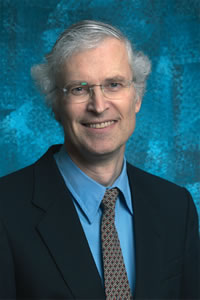 Professor Dr. med. Roland Niedner dealt with the Problematic Nature of Approvals. |
If equivalence for a topical dermatic to an already known product is to be proven, data concerning pharmaco-dynamics and pharmaco-kinetics have to be determined in comparable clinical studies or possibly by means of in-vitro investigations. Moreover, tests regarding release, penetration and permeation of the active substance as well as concerning the schedule of the active substance concentration in the stratum corneum and steady-state level are to be performed.
Subject to discussion in the lecture was also the aut-idem regulation passed by the legislator. There was a consensus that the prerequisites for the exchangeability of active substance-identical dermatics are only ensured if bio-equivalence has been established by means of the analyses touched upon by Niedner. As such analyses have not been performed at a satisfactory extent, active substance-identical topical dermatics are exempt from the aut-idem regulation. The GD takes this view in a statement, which has been presented to the public on the occasion of 6th Annual Meeting of the GD and published, both on the GD homepage (www.gd-online.de) and in DermoTopics (issue 1/2002, pages 4-5).
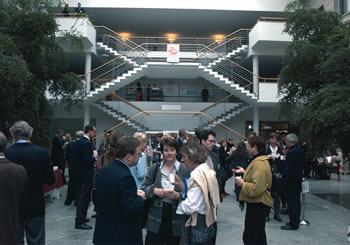 The agreeable atmosphere in the new university building offered the meeting participants optimal conditions for an interdisciplinary and intra-institutional exchange of ideas usual for Annual Meetings of the GD. |
News of Povidone-Iodine,
Dexpanthenol and Ciclopirox
News of known
dermatological active substances was presented in further lectures concerning
Dermatotherapy. Dr. med. Karen Reimer, Limburg, informed about a novel liposomal
complex of the antiseptic povidone (PVP)-iodine. This complex combines the
water transport function, good tolerability and specific topical activity
of liposomes with the microbicidal activity of the antiseptic active substance.
The complex thus fulfils at the same time both aspects targeted in the wound
healing - infection prevention and the furtherance of tissue repair which
has been proven, according to the lecturer, in animal experiments as well
as in pre-clinical and clinical studies.
Professor Dr. med. Dr. rer. nat. Erhardt Proksch of University Dermatological
Clinic, Kiel, presented the results of a placebo-controlled study based
on a Dexpanthenol ointment available on the market. The treatment with this
ointment entailed an accelerated repair of the pre-damaged skin barrier
with sodium lauryl sulphate, an increase of the hydration of the stratum
corneum, a reduction of the skin roughness as well as a reduction of the
skin reddening as sign of an inflammation inhibition. Please refer for detailed
information concerning this and a further study to a
separate article in this issue, German edition.
 Hamburg was the first city in Northern Germany as venue of an Annual Meeting of the GD. |
The results of two clinical studies concerning the effectiveness of the antimycotic Ciclopirox with the seborrhoeic eczema, about which Dr. Karl-Heinz Nietsch, Bad Soden informed, can be referred to in a separate article of the German edition. 165 respectively 189 patients took part in these two studies which were designed as double-blind randomised parallel group comparisons. These patients suffered from a clinically diagnosed seborrhoeic eczema of the face. In one study the test product, a one-percent Ciclopirox cream was applied once a day, in the other one twice a day. References were the corresponding vehicle as well as a two-percent Ketoconazole cream. The Ciclopirox cream was at good tolerability significantly more effective than the vehicle and at least as effective as the Ketoconazole cream.
Registration of Skin Influences
from Hand Disinfectants
Frequent hand washing gives rise to an extraction of the protecting hydro-lipid film as well as partly also of the epidermal lipids. This effect is enhanced by the use of surfactant-containing preparations as can also be found with hand disinfectants. In order to weaken the degreasing effect, fat-restoring additives are often incorporated in these products. Standardized methods for investigation of the complex interactions of these preparations with skin are, however, to date hardly available.
 There was intense activity at the meeting offices in the course of the three event days. |
A new methodical approach has been presented by the graduate chemist Dr. med. Lothar W. Weber of the Institut für Arbeits-, Sozial- und Umweltmedizin (Institute for Occupational-, Social and Environmental Medicine) at the University Clinic Ulm. In this process, after standardized hand washing, the surface tension of the solution flowing off from the skin is measured. Since the water-miscible lipid components may induce a lowering of the surface tension, the lipid elution rate, which is then considered to serve as degree for the defatting respectively refatting capacity of the test product can be measured via the surface tension. In test series based on commercial antiseptic hand wash solutions, Weber established partly significant distinctions at the measured surface tension and concluded that such preparations differ concerning their skin-caring properties.
Claim Substantiation of
Cosmetics has to be proven
If certain claims are attributed to a cosmetical product, there is an obligation for substantiation. Professor Dr. med. Klaus Wilhelm of the Institut proDerm in Schenefeld near Hamburg informed the meeting participants about which investigation procedures for a scientific claim substantiation of cosmetic products are in general appropriate. Proven claims are for example smoothening and tightening, moisture enrichment, wrinkle reduction and blood circulation stimulation of skin, sweat reduction as well as sun protection.
 Professor Dr. med. Klaus-P. Wilhelm performs tests on Dermocosmetics. |
In general, for qualified tests regarding the effectiveness of cosmetics, a multidisciplinary team is required. Moreover, each test is to be based on appropriate quality standards. Some procedures, e.g. the laser-Doppler flowmetry for the measurement of skin blood circulation lead over to the proof of pharmaceutic effects. The investigator of cosmetics should always be aware of the significance of his analyses for the consumer.
Skin Care Without Emulsifiers
It has been known for a long time already that the skin is protected from excessive water loss and thus dehydration by a lipid barrier in the stratum corneum. Strength and function of this barrier are characterized by a specific composition of lamellar oriented lipids in the intercellular space of the stratum corneum. As graduate engineer Martin Albrecht, Leichlingen, reported, emulsifiers in skin care products in the same way as surfactants in skin cleansers enhance the fluidity of the barrier and lead thus to structural defects.
In the lecturer's opinion, care products, in particular those for dry and sensitive skin should therefore be based on specifically composed membrane lipids with lamellar structure and not contain substances giving cause for concern due to physiological reasons. These conditions are complied with by the cream concentrate designated as DMS (Derma Membrane Structure) which has been developed in particular for the requirements of dry and sensitive skin and which has been applied in the meantime in diverse dermocosmetics.
 The program of 6th Annual Meeting of the GD met with interest at representatives of authorities and consumer associations. The member of the GD Committee, Professor Dr. med. Horst Spielmann, of the Bundesinstitut für gesundheitlichen Verbraucherschutz und Veterinärmedizin (BgVV) in Berlin [Federal Institute for Sanitary Consumer Protection and Veterinary Medicine] took part in a lecture discussion. |
News Concerning UV-Protection of Skin
Professor Dr. med. Jean Krutmann of the Institut für umweltmedizinische Forschung (Institute for Environmental Medicinal Research) of Heinrich-Heine University, Düsseldorf, informed about a relatively new UV-protection principle for sun protection agents and after sun preparations. The protection principle presented is derived from algae, which protect themselves by means of the DNA-repair enzyme photolyasis from UV-radiation of the sun. Although humans do not produce this enzyme, it is nevertheless able to repair UV damages in human skin if it is applied during or immediately after sunbathing, Krutmann explained. As first photolyase-containing preparation an after-sun gel has been introduced on the market in spring 2001. In spring of this year, two sun-protection gels followed which contain the photolyasis in combination with UV-filters.
Induced by UV-B radiation, a cross-linkage at the DNA of human skin cells of neighbouring thymine bases to cyclobutane pyrimidine dimers (CPD) is initiated. They trigger gene mutations, suppress the immune system of the skin and favor thus the growth of tumor cells, the first stage of skin cancer. Photolyasis is able to separate the developed CPD complexes and to repair thus the DNA. As Krutmann explained, the skin is able to regenerate itself, however, this is only effected to an extent of maximal 50 percent and only 16 to 24 hours after UV influence. If, however, a photolyasis-containing preparation is applied during or shortly after the exposure of the UV radiation, then the crucial CPD complexes disintegrate again after an exposure time of 30 minutes at 45 percent and the immune system of the skin is restored to even 100 percent.
|
|
Dr. med. Rippke, Hamburg, discussed a different aspect of skin protection. He introduced the flavonoids, widespread in the flora, a promising new active substance group for the anti-oxidative light protection. Since it has been known that UV radiation enhances the formation of free radicals in skin and enhances cell damages proceeding from these highly reactive oxygen species, substances with anti-oxidative effectiveness are increasingly applied in sun-protection agents and face-care preparations. As Rippke reported, the substance alpha-glucosylrutine, derived from the leaves of the pagoda tree and made water-soluble by enzymatic glycosidation, having a marked anti-oxidative effectiveness and supporting effect on the endogenous anti-oxidant pool has been found. Rippke predicted skin care products on the basis of this substance a considerable potential in the prevention of UV-induced premature skin ageing. (ghw/jk)
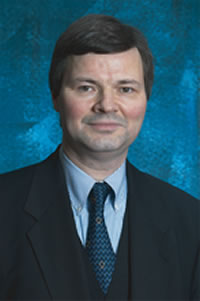 The Vice-President of the GD, Professor Dr. med. Hans Christian Korting, became 50 years old on the day of the Scientific Main Program of the GD's 6th Annual Meeting (21 March 2002). His birthday was celebrated in the frame of an evening event at which the GD honoured him for his untiring efforts by awarding him a sculpture that was especially created for him. |
| There will be reports in the coming issues of DermoTopics about the workshops "Dermocosmetic Sun Protection" and "Practice-oriented Prescription in 3rd Millennium". For summaries of all lectures and poster lectures of 6th Annual Meeting of the GD and 3rd Symposium "Health Economy in Dermatology" please refer to the GD homepage in the Internet (www.gd-online.de). |
